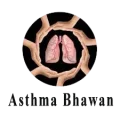
Asthma Attack – Signs, Symptoms, and Treatment | Asthma Bhawan
Let us know more about the Asthma Attack!
An asthma attack is said to be serious when the muscles of the airways tighten and create disturbance in the process of Breathing. The airway’s lining swells or inflames and thicker mucus is produced than usual. Common signs of asthma could be:
- Severe wheezing on inhalation and exhalation
- Coughing that will not stop rapid breathing
- Tightness or pressure in the chest
- Retractions are tightened neck and chest muscles
- Talking is difficult
- Anxiety or panic attacks
- The face is pale and sweaty.
- Lips or fingernails that are blue
- Symptoms worsening despite medication use
Some people with asthma may go for long periods without having an asthma attack or other symptoms, only to have their symptoms worsen due to exposure to asthma triggers such as exercise or cold air.
Also, read Fog effects on asthma patients.
How Do I Spot the Early Warning Signs of an Asthma Attack?
Early warning signs are changes that occur just before or at the start of an asthma attack. These changes occur before the well-known symptoms of asthma and are the first indications that your asthma is worsening.
In general, these early asthma attack symptoms are not severe enough to prevent you from going about your daily activities. However, by recognizing these symptoms, you can either stop an asthma attack or prevent it from worsening.
Early Asthma symptoms of Asthma Attack may include:
- More coughing at night than usual
- Peak flow meter readings have decreased
- Shortness of breath or easy loss of breath
- Tired, easily irritated, grumpy, or moody
- Changes or decreases in lung function as measured by a peak flow meter
- Allergies like sneezing, runny nose, cough, nasal congestion, sore throat, and headache
- Sleeping problems due to nighttime asthma
- Because the severity of an asthma attack can rapidly worsen, it’s critical to treat these symptoms as soon as you notice them.
Also, Check Cold-Induced Asthma.
Asthma Treatment
At the first sign of an asthma attack, follow the instructions in your asthma action plan.
Asthma treatment varies, but it usually consists of taking two to six puffs of a rescue inhaler to open your airways.
Small children or others who have difficulty using an inhaler may benefit from the use of a nebulizer. A nebulizer is a device that converts liquid asthma medication or inhaler medication into a mist. This mist is then deeply inhaled into the lungs. You can read the difference between inhaler and nebulizer.
Repeat the treatment if your symptoms do not improve within 20 minutes.
If your doctor has prescribed long-term asthma control medication, take it exactly as directed to avoid an asthma attack in the future. Preventing is also aided by avoiding known triggers.
Video: Asthma Attack Cure
Conclusion
It is crucial to know the ‘why’ behind every sign of an Asthma Attack you get. It is advised to get treatment from the doctor before it’s too late for the asthma treatment. As soon as a child or a toddler gets proper treatment at the early stage of their lives.
Hence, consult for more treatment of Asthma Attacks, seasonal asthma, and allergies or call us on the emergency line (+91)9352934531 to know more about Asthma Attacks – Signs, Symptoms, and Treatment? or you can visit Asthma Bhawan.

